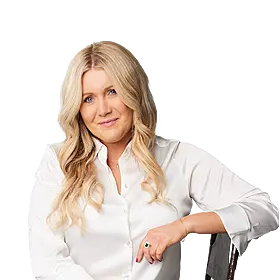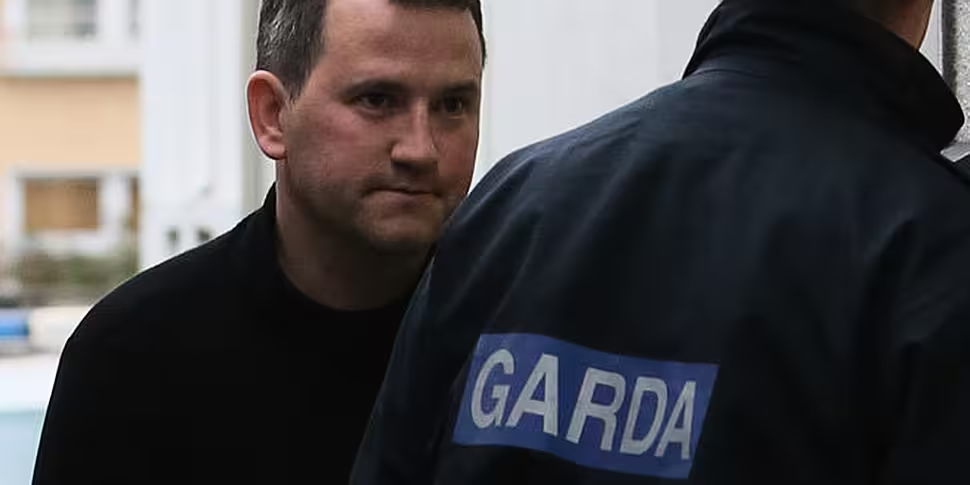As years go, 2015 felt like it had more than its fair misery quotient. While the scenes of joy at Dublin Castle on May 23 are already being etched into the tablets of Ireland’s history, there was little beyond the bleak to fill headlines both at home and abroad this year.
We've put together a brief list here of stories from Ireland and abroad that made a major impact this year, either through their emotional effect on the Irish population or their long-term impact for Ireland and the world.
Germanwings Crash

Rescue workers work at debris of the Germanwings jet near Seyne-les-Alpes, France | Image: Laurent Cipriani / AP/Press Association Images
On March 24, an Airbus A320-211 plunged suddenly above the French Alps. Shortly after reaching its cruising altitude the plane went into a steady, deliberate descent. In the cockpit the flight’s co-pilot, Andreas Lubitz, remained calm as he steered the plane into the mountains below.
All 150 people on board died in the crash and as the story unfolded in the days after it became increasingly clear that this was a far more disturbing, and profoundly unsettling air crash. Rather than the lottery of a mechanical fault, or being at the mercy of a callous act of terrorism, this was mass murder by one of the men charged with guarding the safety of those on board.
Revelations about Lubitz following the crash painted a picture of a man beset my mental health issues and raised serious questions about the monitoring of pilots' mindsets.
Refugee crisis
The photo of three-year-old Syrian refugee Aylan Kurdi, who died while attempting to reach Europe, was a defining moment in the refugee crisis
A story that was hovering in from the margins of the mainstream news debate intermittently for a couple of years, but the summer of 2015 was when the refugee crisis – driven primarily by the war in Syria, but also by the situation in Eritrea and other nations – became the biggest story around the globe.
Millions fled their homes, seeking refuge in Europe and elsewhere. As the refugee camps in Jordan and other nations swelled far beyond capacity the numbers crossing the Mediterranean increased rapidly. The numbers dying at sea rose, as did the political debate in the EU. The death of Alan Kurdi, on September 2, changed the world.
With the soles of his small brown shoes foregrounding this plump arms and legs, the prone body lapped by the Mediterranean surf on a beach in Turkey was the universal humanising symbol of pity and horror in a story that had becoming increasingly dehumanised.
The crisis continues, with December 22 seeing the one millionth refugee reaching Europe in 2015.
Paris attacks

Police officers takes cover behind cars outside the Bataclan theater in Paris, France (PA Photo)
In 2015 the French capital was subjected to two terrorist attacks that were designed to strike directly at the core of French society.
At roughly 11.30am on January 7, the Kouachi brothers - Said and Cherif – broke into the offices of French magazine Charlie Hebdo. Armed with assault rifles, they killed 11. Outside the building they shot a French police officer dead.
The target of the attacks – Charlie Hebdo – was a magazine famed for its cutting attacks on any and every target which it felt worthy of its satirical eye.
Having published a number of cartoons of The Prophet Muhammad the magazine had previously been threatened and on that January morning those threats became reality in an attack that would shock France and the world, both for their brutal, calculated attack on defenceless civilians, and also for the grander statement they made about the freedom to express ideas – no matter how controversial – without fear of physical attack.
The attackers were later identified as being a part of Al Qaeda in Yemen, and the episode came to an end when French forces stormed a factory in the town of Danmartin on January 9, killing both of the Kouachis, while simultaneously security forces also ended a hostage situation in a Jewish supermarket in Paris – undertaken by Amedy Coulibaly, an associate of the brothers.
Following the attacks Charlie Hebdo produced a print run of over seven million copies of its next edition, compared to its usual 60,000.
The impact of the Charlie Hebdo attack was surpassed on November 13, when gunmen attacked a series of venues around the French capital, killing 130 people, including 89 at the Bataclan theatre during an Eagle of Death Metal gig. In addition to the death toll, some 368 people were injured.
The deadliest attacks on French soil since the end of World War II, the Paris attacks served as the most chilling message yet to Europe of the shifting intentions of the so-called Islamic State. While losing ground in Iraq and Syria due to increased international air strikes, the group proved capable of drastically influencing the political conversation in Europe.
Following the attacks – which targeted cafes, bars and even the Stade De France stadium – where France were playing Germany in an international football game – Europe entered a state of fear and shock, closing some borders as French President Francois Hollande declared the attack an act of war.
Air strikes on Syria by the UK soon followed, while the French – who had already been engaging in strikes – increased attacks.
Water on Mars

2015 saw the discovery of flowing liquid water on Mars Image: Nasa
A bit of good news is probably needed at this point of our recap. Good, or maybe indifferent, depending on how you feel about events beyond the o-zone layer, but the discovery of flowing water on Mars was one of the most significant space discoveries of all time.
On September 28 NASA announced they had discovered flowing, liquid water on Mars. And what did this mean?
Well, we could be almost certain there was life there too. And that was the kicker for almost everyone, really. The discovery explains how Mars came to look like Mars (‘recurring slope lineae formed as a result of contemporary water activity’, NASA scientists proclaimed to the world) but all anybody really wanted to know was – are there aliens?
The findings could have far-reaching implications for the chances of finding life on Mars and for humans someday exploring the Red Planet. And NASA are already planning to head out there some time in the next couple of decades.
Marriage Referendum

Crowds at Dublin Castle on May 23 await the result of the referendum | Photocall file photo
Undoubtedly the biggest story for Ireland in 2015, and the only Irish story to register globally.
Following a campaign that grew increasingly caustic (on both sides) in the closing stages the public voted to legalise same-sex marriage by an almost two to one majority – becoming the first country in the world to legalise same-sex marriage by popular vote.
On May 23 Ireland was transformed as the results of the referendum rolled in, with Vincent Browne in The George surrounded by dancers and drag queens and rainbow flags filling the capital city’s streets as the result was celebrated.
For campaigners like David Norris and Panti Bliss it was the culmination of a lifelong battle for equality and recognition in their home, while for many others it felt like Ireland was not just accepting same-sex marriage, but rejecting the conservative ways of old and embracing a new path for the country.
The Trial of Graham Dwyer

Graham Dwyer (left) | Image: Niall Carson / PA Wire/Press Association Images
There has perhaps never been a trial that evoked as much public interest and grim fascination as that of Graham Dwyer in the Spring of 2015.
Over the course of nine weeks the country remained gripped by the story of a seemingly respectable middle-class architect who was accused of killing Elaine O’Hara - a vulnerable young woman - in a calculated, chilling crime that would have remained undetected were it not for a series of remarkable coincidences.
The plotting, along with Dwyer’s background and secret life, and the incredible passage of events that led to his conviction combined to keep the country gripped to events in a trial that was as upsetting as it was remarkable.
The evidence in the case became so distressing at times that the judge had to ask the public to leave the courtroom.
There was unprecedented interest in a trial that both horrified and fascinated the public and after nine weeks the nation stopped on Friday, March 27 to hear that Dwyer had been found guilty of murder.
Carrickmines Fire

The site of the Carrickmines fire, in which 10 people died Image: RollingNews.ie
In the early hours of the morning on Saturday October 10 five children and five adults were killed in a fire, caused by at a halting site in Carrickmines in south Dublin.
In his homily at the funeral of five of the victims, Fr Derek Farrell of the Parish of the Travelling People said the settled community and the Traveller community had to come together to ensure the deaths mattered. He described it as a “watershed” moment
The initial shock of the massive loss of life soon became more than just a horrendous, tragic loss of life. It became a national issue on traveller accommodation. When local residents blocked temporary accommodation for the survivors of the fire became a debate on Traveller’s rights, and their place in Irish society.
The murder of Karen Buckley

Karen Buckley
For the second time in 2015 Ireland was faced with the grim revealing of a particularly callous, brutal murder of a young Irishwoman.
Karen Buckley went missing in Glasgow the early hours of the morning of April 12. What followed was a frantic search that eventually transformed into a murder inquiry as a steady stream of evidence led police to a secluded farm outside Glasgow.
Having been out at night with friends in The Sanctuary Nightclub Karen - a 24-year-old nurse from Co Cork who was studying in the Scottish city - went missing. CCTV images picked her up talking to a young man on the street close to the nightclub.
Eventually police would reveal that they believe Alexander Pacteaua, a 21-year-old Scottish man, had killed Karen Buckley within 20 minutes of meeting her, hitting across the head with a spanner up to 13 times after a failed attempt to strangle her.
The ensuing trial would reveal a horrific sequence of events, from Pacteau storing Buckley’s body in his apartment bedroom overnight, to him buying caustic soda in an attempt to destroy the remains. It was a harrowing tale of an unfathomable darkness brought upon an innocent young woman out enjoying a night with friends.
Pacteau was found guilty of the murder of Karen, and sentenced to life in prison. He will spend a minimum of 23 years behind bars.










